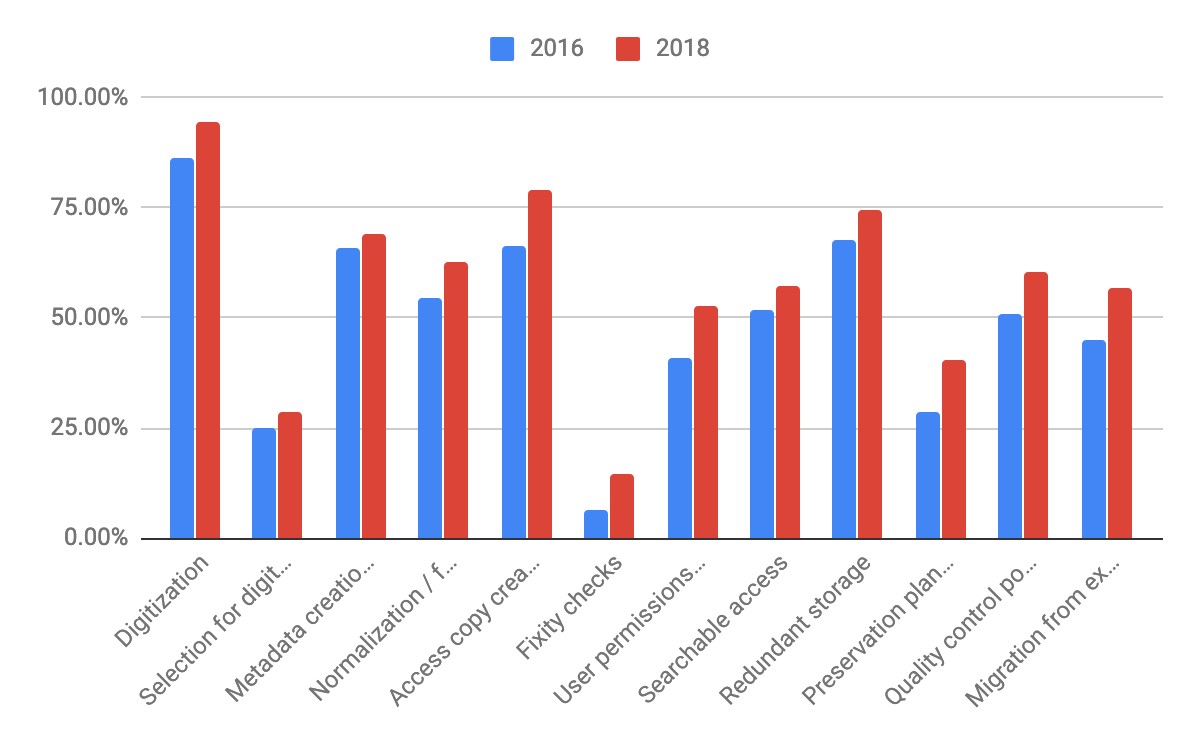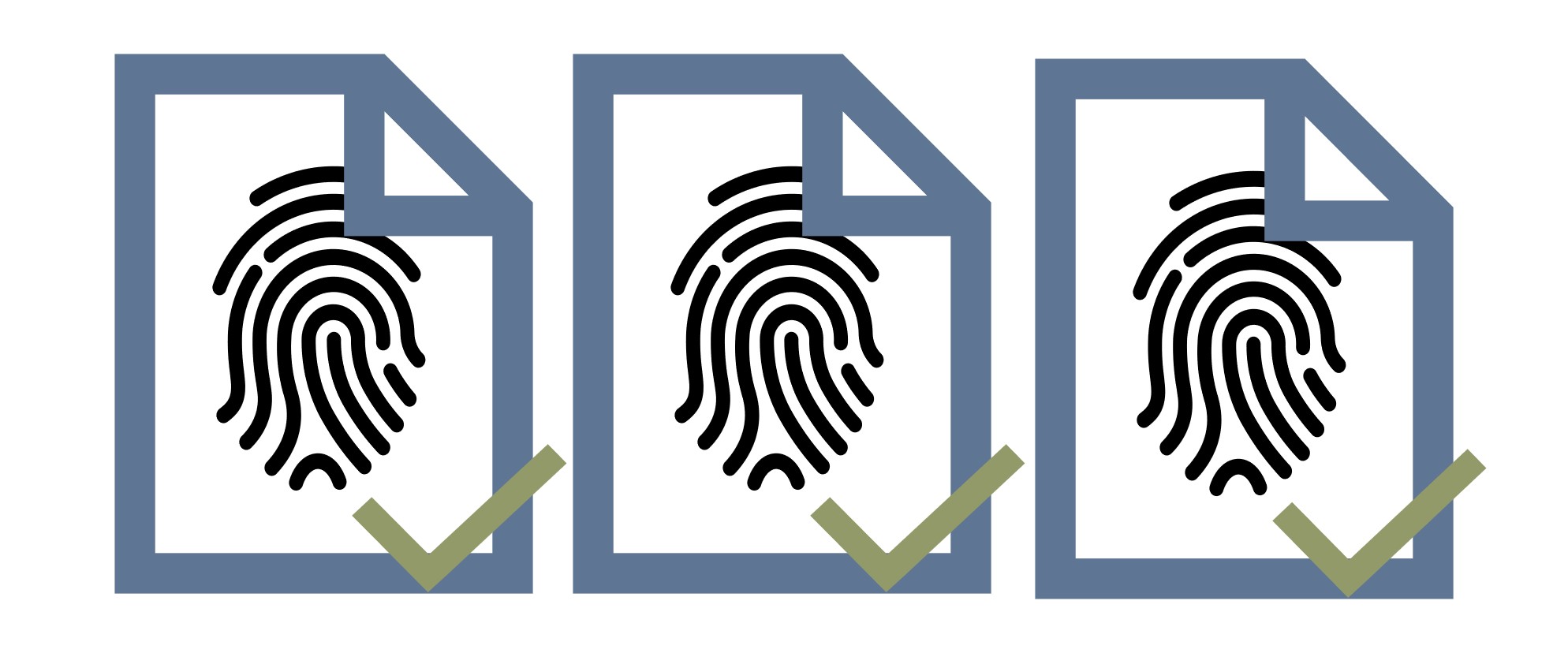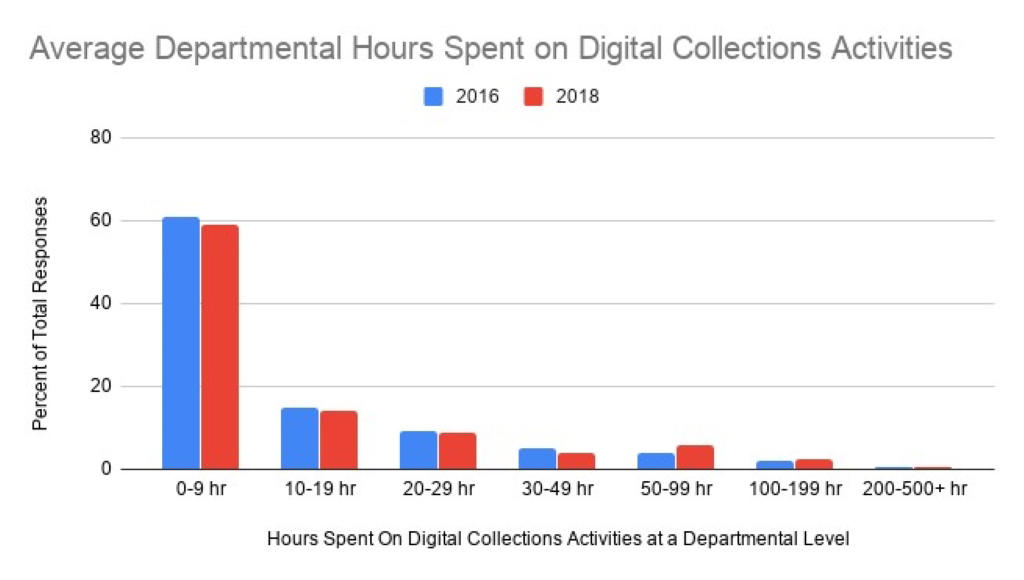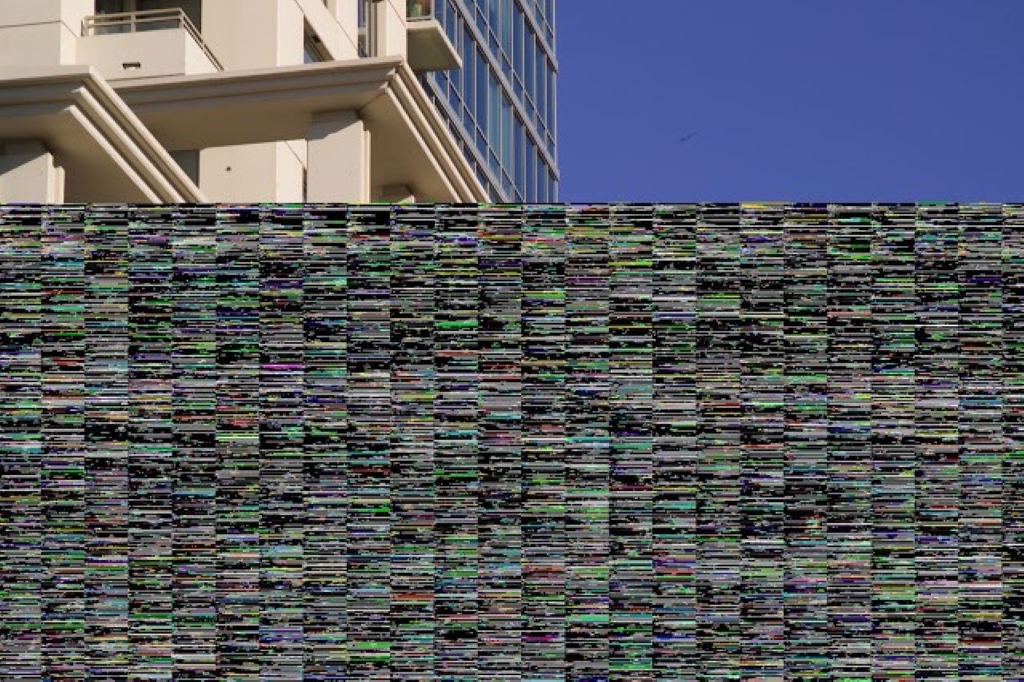NEDCC Surveys Current Practices
Article by Becky Geller, Preservation Specialist, 2020
NEDCC’s Preservation Services has been providing digital preservation support for nearly three decades. In 2000, we published our first digital guide, Handbook for Digital Objects: A Management Tool for Preservation and Access, as cultural heritage organizations began to digitize holdings and collect born-digital records, and needed strategies to care for these materials. Our education programs extend back to 1995 and include School for Scanning (1995-2007) and Persistence of Memory: Stewardship of Digital Assets (2005-2008), and Digital Directions (2008-present).
In 2016, we were awarded a Preservation and Access Education and Training grant from the National Endowment for the Humanities to prepare and present a collaborative Digital Preservation Assessment training program. Case-study assessments, shadowing opportunities, workshops, a training institute, and a final symposium allowed for 20 professionals to be trained to conduct digital preservation assessments. The program also resulted in our most recent publications about digital collecting: Digital Preservation Assessment Handbook and Digital Preservation Peer Assessment.


Digital Preservation Assessment Handbook and Digital Preservation Peer Assessment
NEDCC CONDUCTS SURVEYS OF CURRENT PRACTICES
To best provide digital assessment training, we decided to “take the temperature” of digital collections management and preservation practices at the small- to mid-sized organizations that would benefit from this assessment. Questions we aimed to answer included: How much digitization is taking place? How are the resulting digital objects being managed? Do staff have the resources they need to steward digital collections? And finally, what information do they need, so that we may offer it?
We conducted two surveys: one in 2016 and one in 2018. We wanted to compare the results to see the growth or decline in different areas of digital collections management. We had the results professionally analyzed by data analysts who are also archivist-librarians – a perfect match! While the number of participants in each survey year varied (748 in 2016 and 286 in 2018), The analysts were able to observe significant findings, interpret trends, and draw evidence-based conclusions.
Key Survey Takeaways Include:
- Digitization, creation of access copies, and redundant digital storage are the most popular digital preservation activities.
- Fixity checking, selection for digitization, and preservation planning and strategy development are the least popular digital preservation activities.
- Staffing for digital preservation is the toughest challenge, followed by funding, infrastructure, and communication.
- Institutional support for digital preservation is needed at both the policy level and the technical level.
- Communication issues were present in all categories of concern.
These observations will not surprise those who work with digital collections. But what can be done about them and how can digital preservation needs be communicated to non-collections staff? Let’s examine each of these five issues in more detail.
1. Digitization, Access Copies, and Redundant Storage
The popularity and proliferation of digitization programs at all cultural heritage institutions is a great step towards the preservation of physical and analog collections. Digitization can be an important part of an institution’s preservation strategy, and it improves access to collections. It also creates an entirely new collection of digital objects that need ongoing management and preservation in and of themselves. While redundancy in storage (e.g., storing digital collections in a combination of local servers, hard drives, and cloud storage) establishes baseline of digital preservation, it is only one part of an overall digital storage strategy.
Survey Results: Types of activities in which institutions engaged, whether in-house or through a vendor. Every category shows an increase from 2016 to 2018, with fixity checking the least popular activity in both years.
2. Fixity Checking, Selection for Digitization, and Digital Preservation Planning
While digitization projects are indeed getting under way at a majority of the institutions that responded to our surveys, digital preservation planning and support activities are not always happening alongside them. For example, fixity checking ensures that the digital objects in collections remain permanent and unchanged, i.e. “fixed” in perpetuity. Because digital files are susceptible to such risks as file corruption, checking for fixity on a regular basis is important to long term digital collection management.
Managing digital collections for the long term is crucial to their survival, which takes planning. Without a plan to preserve digital assets, time and money are sure to be wasted! That being said, not all digital objects can be digitized and preserved at the same level – selecting the most important and original materials for digitization and preservation ensures that an organization is using its limited resources on items that are the highest priorities (e.g., unique primary sources such as handwritten letters or original oral history recordings).
Fixity checking ensures that files remain intact and unchanged. A "checksum" acts as the fingerprint of a digital file; one is generated for each file at regular intervals and compared to earlier generations of that checksum. If a newly generated checksum does not match a previous one, the file has been corrupted.
3. Staffing, Finances, and Infrastructure
All digital preservation activities take time, expertise, and resources. To properly ensure that digital collections are preserved into the future, it is crucial to have staff dedicated to these efforts. “Tacking on” digital preservation responsibilities to existing positions and designating digitization and digital collections care as limited-term projects are not usually adequate to sustain a mature digital preservation program.
Those who are tasked with managing digital assets need specialized training in digital preservation, a field of study that is always developing and evolving. Digital preservation training needs to be ongoing, so that new developments are considered and local practices reflect global standards.
In terms of infrastructure, the Content Management Systems (CMS) that are used to manage physical collections are not necessarily built to fully manage digital collections. Digital preservation workflows rely on local technology (operating systems, software, equipment, etc.) to be effective, including but not limited to Digital Asset Management Systems (DAMS) and/or access to and support for digital preservation tools and programs.
Survey Results: Each bar represents average hours of digital collections work per week completed collectively in respondents’ departments, in 2016 and 2018 respectively. About 60% of all respondents spend only 0-9 hours per week on digitization and/or digital collections management at a departmental level. About 5% of respondents’ departments are able to collectively spend between 30-50 hours per week on these activities, approximating one full time position dedicated to digital collections work.
4. Supporting Policies and Technologies
Many cultural heritage institutions have comprehensive collection management policies that are based on mission statements and guide decision making for physical collections. Of these policies, however, very few address the management of digital collections. Considering the technological needs of digital asset management, institutional policies and workplace technologies must explicitly address the needs of digital collections.
Similar to physical collections, digital assets suffer damage or loss without strategic preservation policies, and those policies take time, expertise, and resources to develop and implement. There are ways to piece together a very good digital preservation program using free tools (see the Community-Owned Preservation Tools Registry “COPTR”) and tried and true workflows (see Library Workflow Exchange and Community-Owned Workflows “COW” from COPTR), but these do require institutional support in terms of staffing, funding, training, and infrastructure – all of which should be documented in policy.
A computer’s motherboard. Various types of storage media allow for redundant and geographically disperse digital storage. An institution may choose a combination of local servers, hard drives, and cloud storage to diversify and secure their digital storage. (Photo: Alexandre Debiéve/Unsplash)
5. Digital Preservation Communication
Communicating digital preservation needs to administration, boards, and other stakeholders is a challenge, not least because digital assets have little to no physical presence in standard collections storage spaces. The preservation master copies of digital files need secure, redundant, and geographically dispersed storage on servers, drives, and in the cloud – and not a typical storage room filled with interesting artifacts and tidy archival enclosures.
It is also difficult to explain that online digital collections are providing access, but not preservation. Online versions of digital collections are created for access, and the files need to be manipulated and compressed to be usable and accessible; therefore, problems like file corruption are to be expected. The “repair” of a corrupted online access copy is done by generating a replacement from a preservation master copy. This is just one of many digital preservation activities that occur unseen in the background and the experience is seamless from a viewer’s perspective. However, that oft unseen support is in fact digital preservation in action.
One bit out of place in a raster image can result in a corrupted file like the one seen here. The only way to correct the problem is to generate a replacement from a preservation master copy of the image. Preservation files must be kept secure in stable, redundant storage systems to ensure they are available.
CONCLUSION
We at NEDCC strongly encourage cultural heritage institutions of any size to dive into planning for digital preservation to ensure that all of your collections will be accessible to future generations. Feel free to Ask NEDCC if you have questions about getting started.
LEARN MORE:
NEDCC offers training programs focused on an array of preservation topics. Below is a list of example topics related to digital collections management and preservation taught by NEDCC through the years. Visit the Current Training Programs page for current descriptions and registration dates, as well as on-demand webinar recordings.
Related NEDCC Training Opportunities:
Strategies for Born-Digital Collections
Validating Digital Files for Preservation
Surveying, Selecting, and Testing Digital Preservation Software
Digital Preservation Planning
Personal Digital Archiving - Free Webinar for 2021 Preservation Week
Building an Easy Digitization Workflow with Small Tools
On-Demand Webinar Recordings:
Diving Deeper with Digital Preservation Tools Using the Command Line
Building an Easy Digital Preservation Workflow with Small Tools
Moving to the next Step with Digital Preservation: The Digital Collections Assessment
NEH does not endorse the products or services mentioned in this article.







